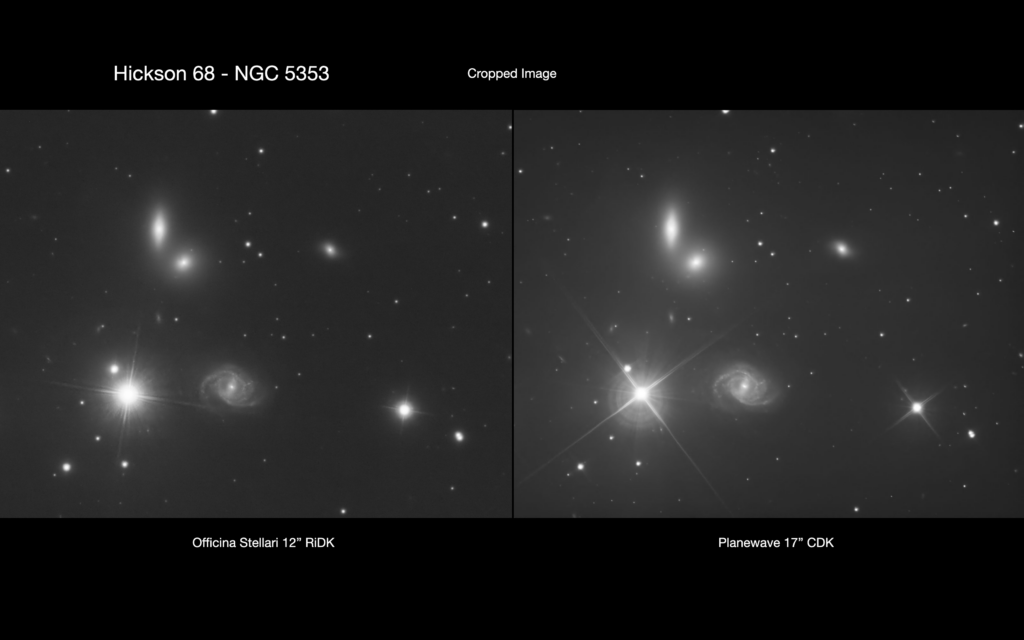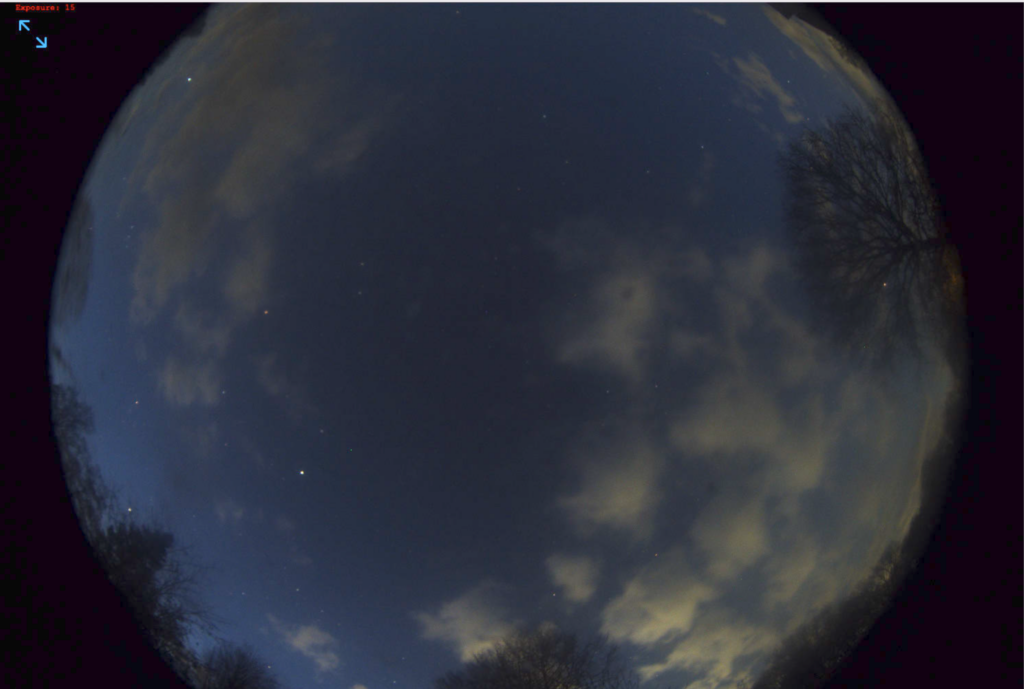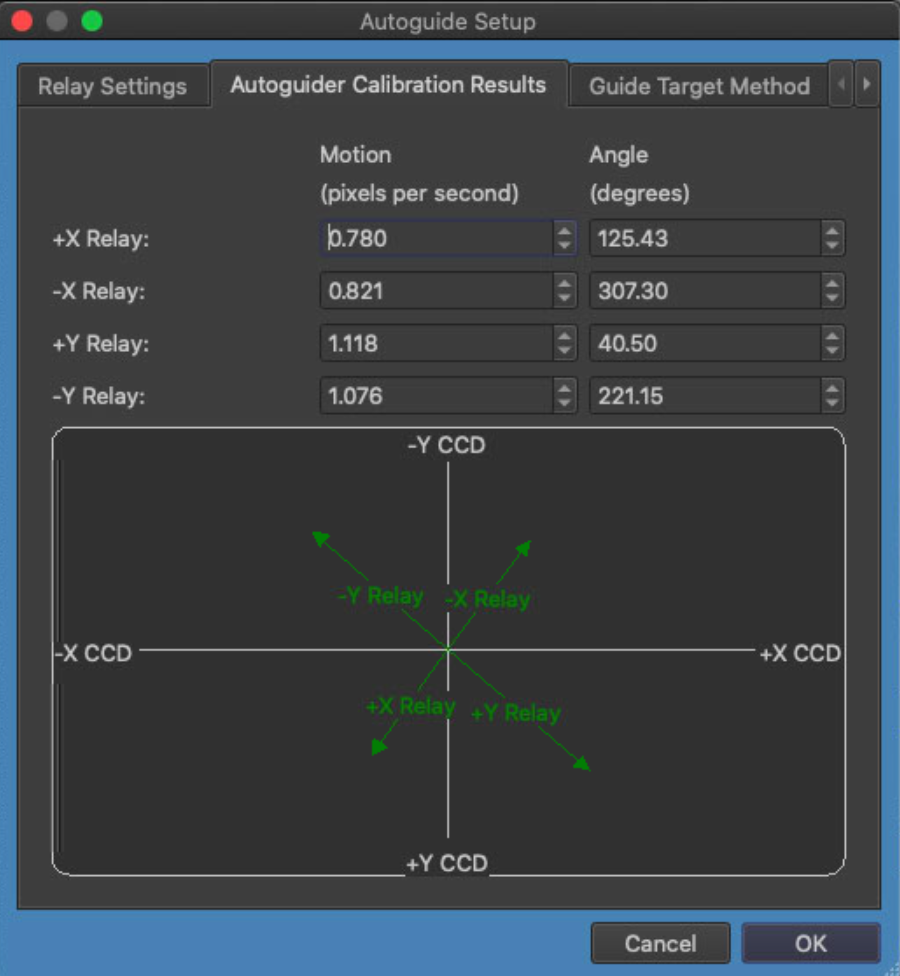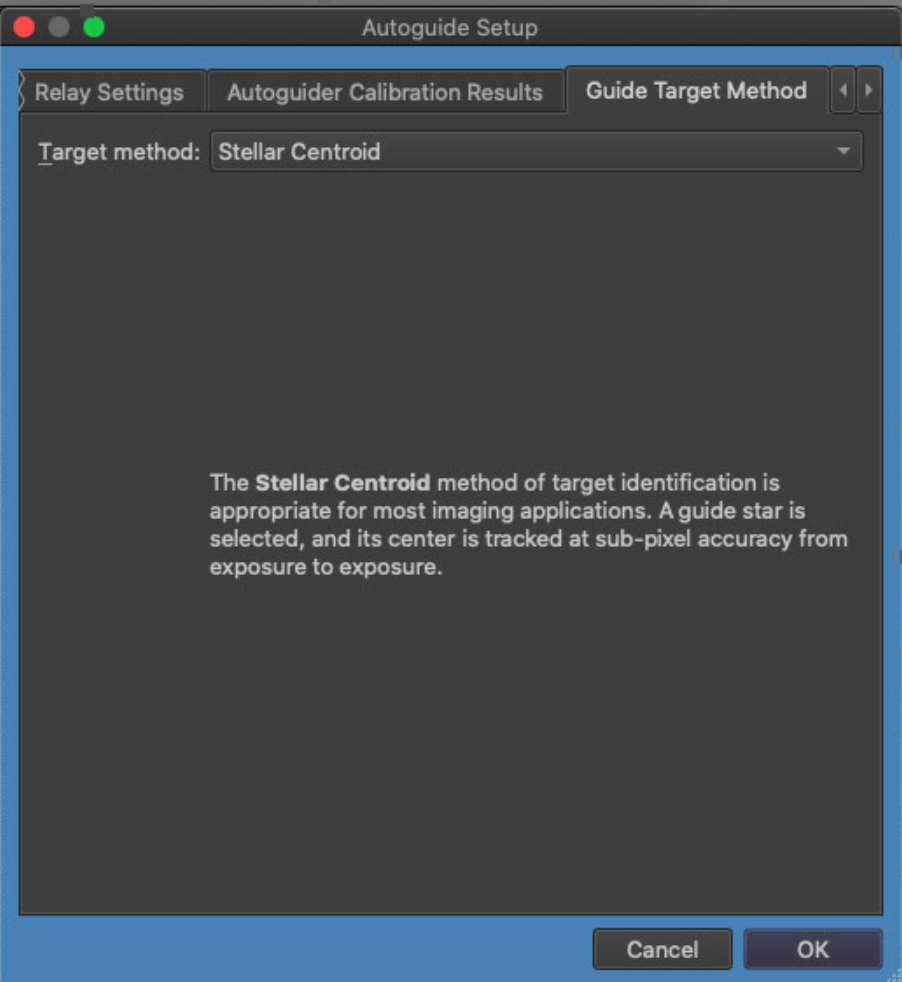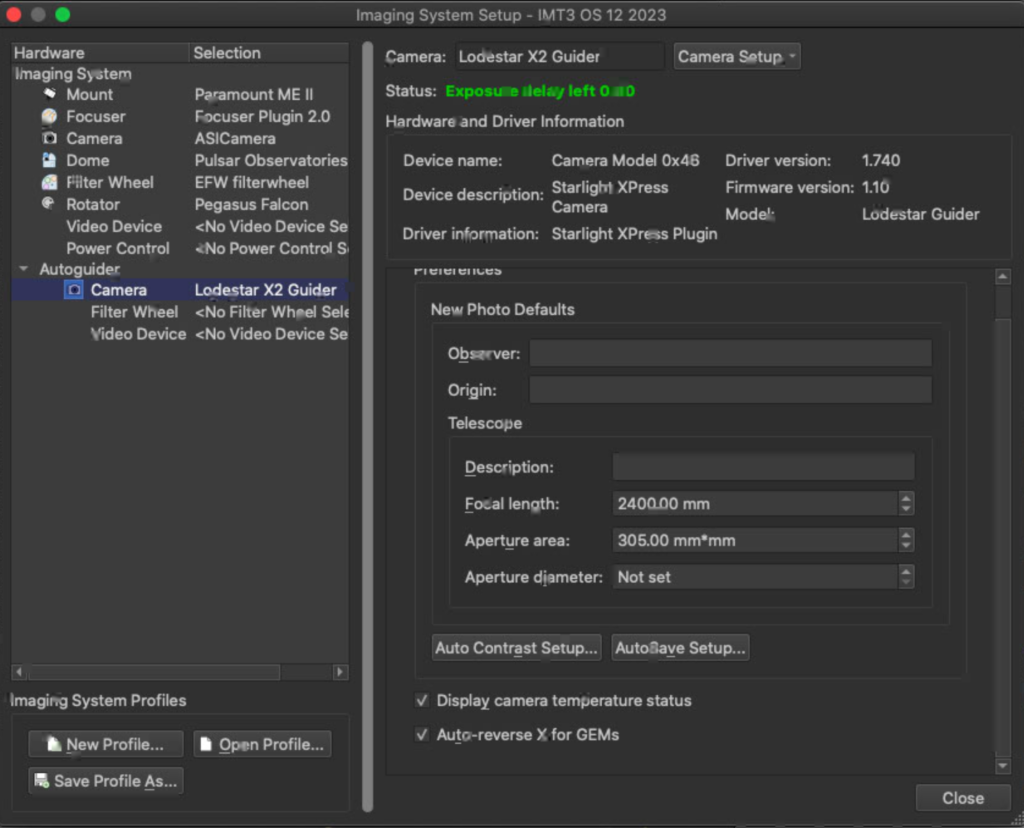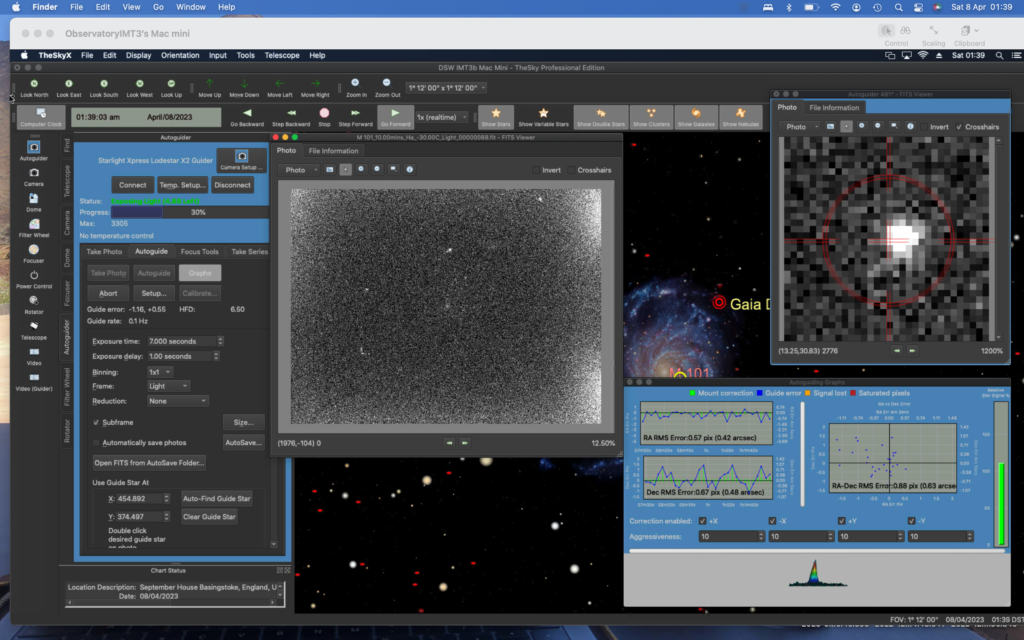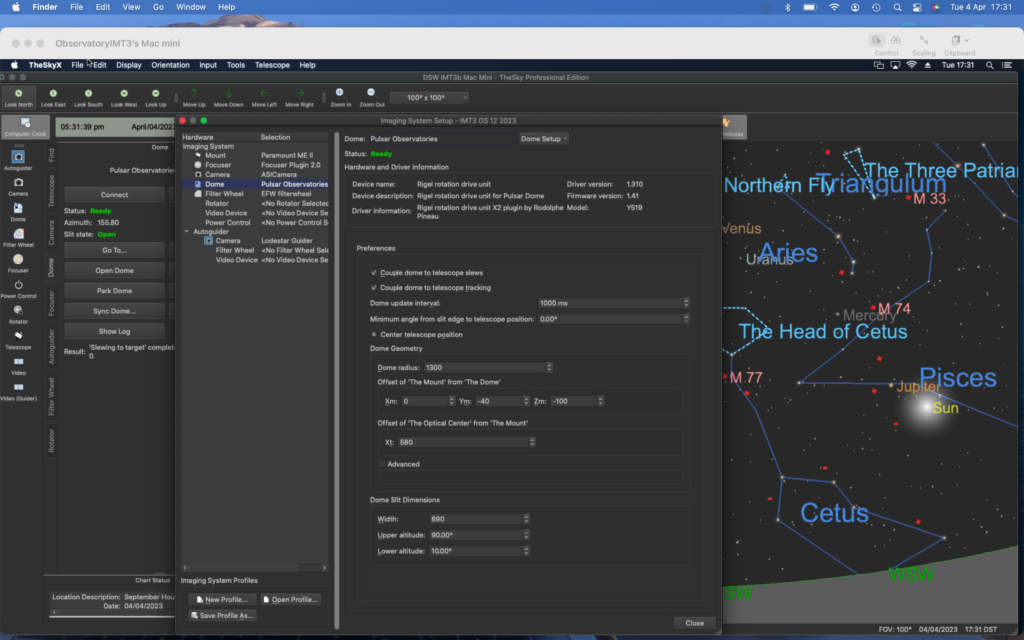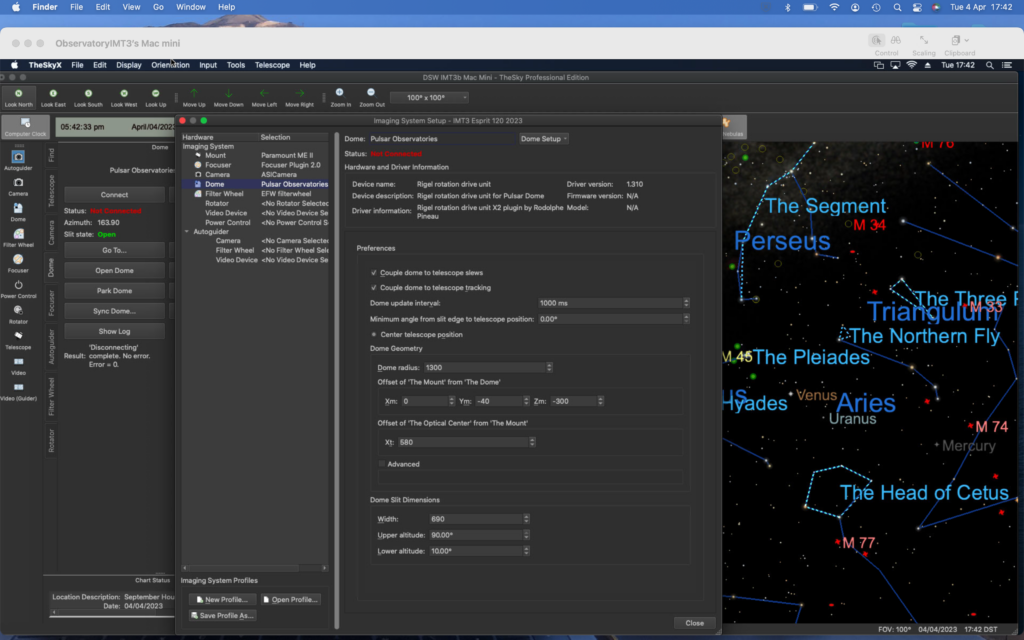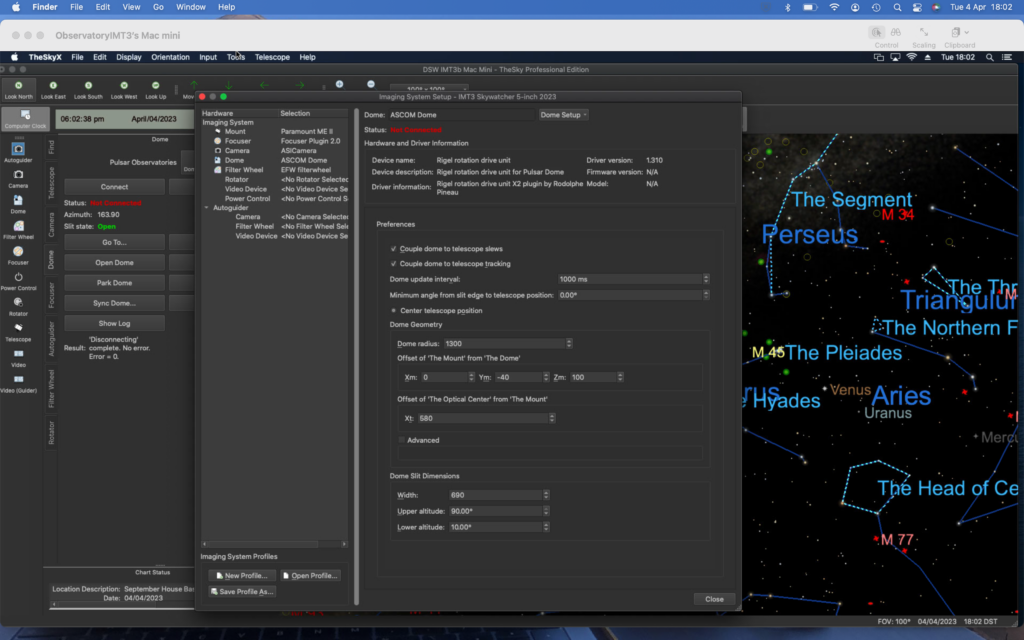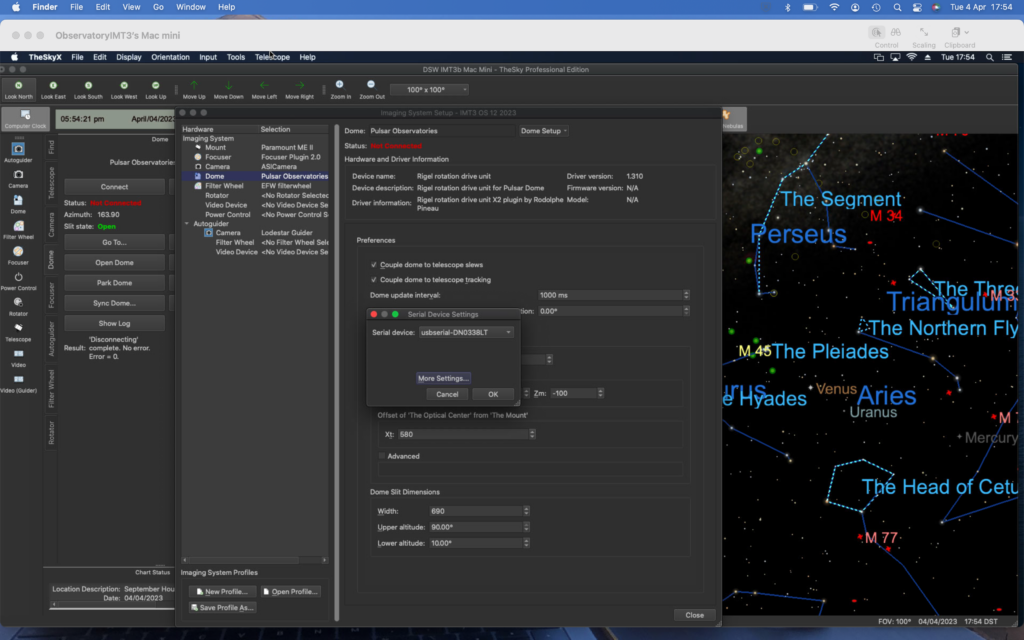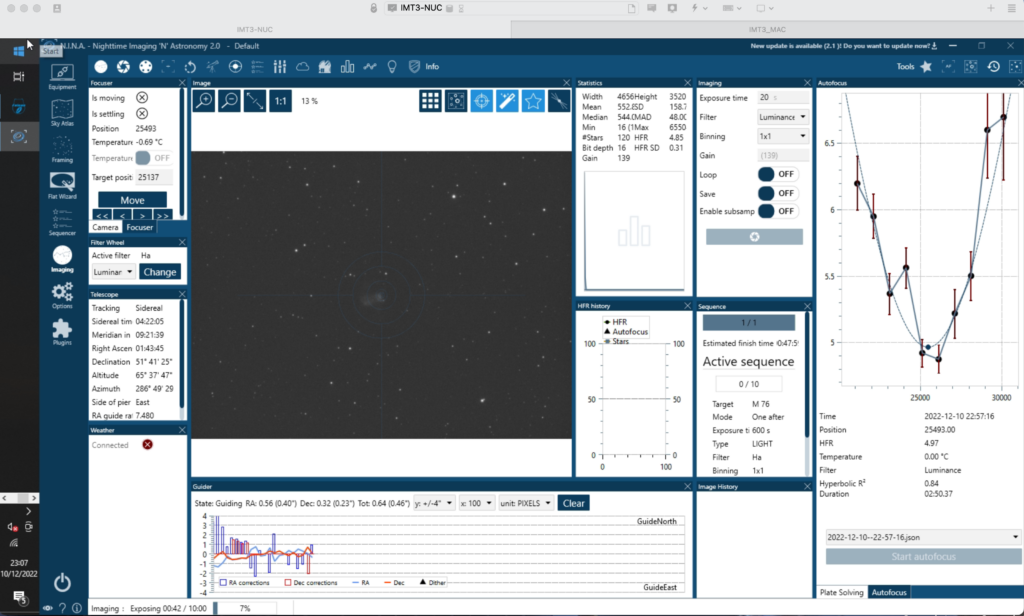22:47 – 03:15
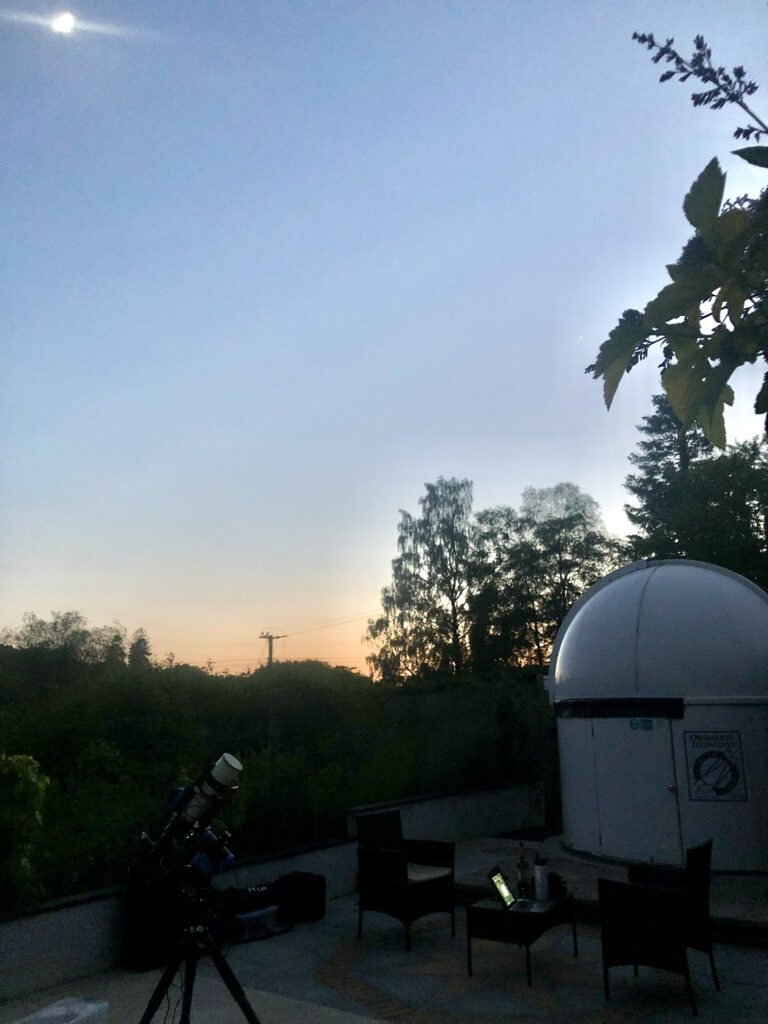
M101 for me this evening to try and get there RGB data in one night. GingerGeek has come round to test out his travel setup, he has a Takahashi FSQ85, QHY268C and the Pegasus NYX-101 harmonic mount.
Focused at 20,105 on Luminance so RGB will be 21,105
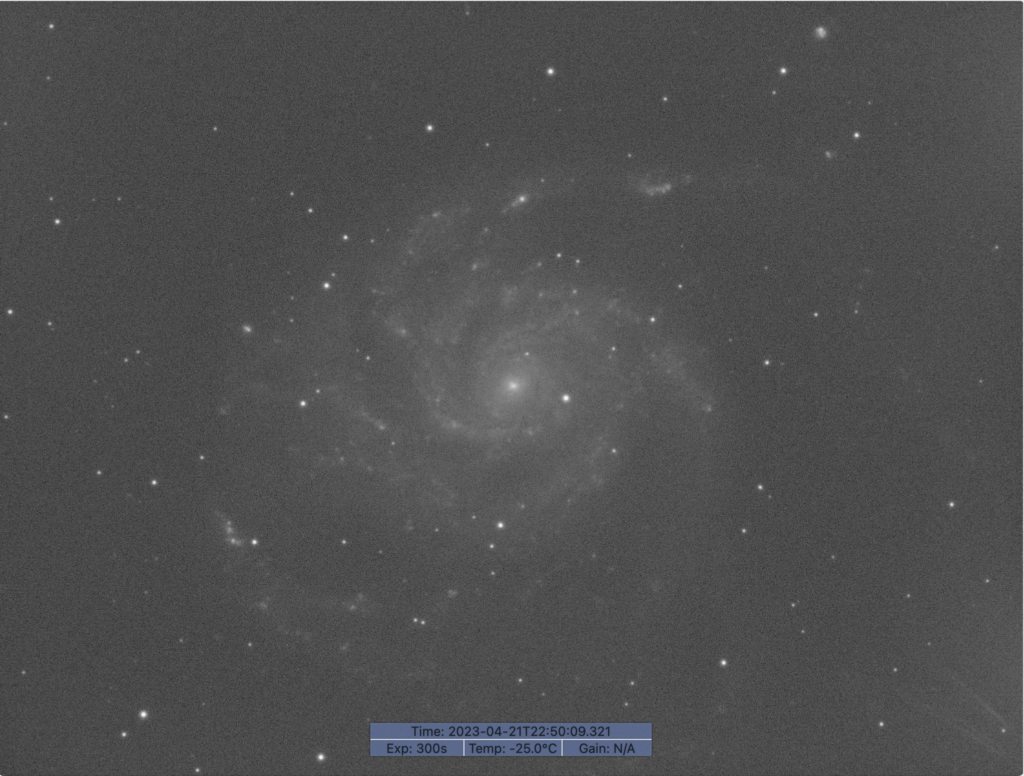
1 x 300s Red
Taking 2 minute exposures for each colour at -25℃. I then realised 5 minutes is so much better. So at 1:30am I then started exposing at 5 minutes with the plan to combine both data sets. The SkyX worked brilliantly as can be seen below, looking after the guiding and image capture.
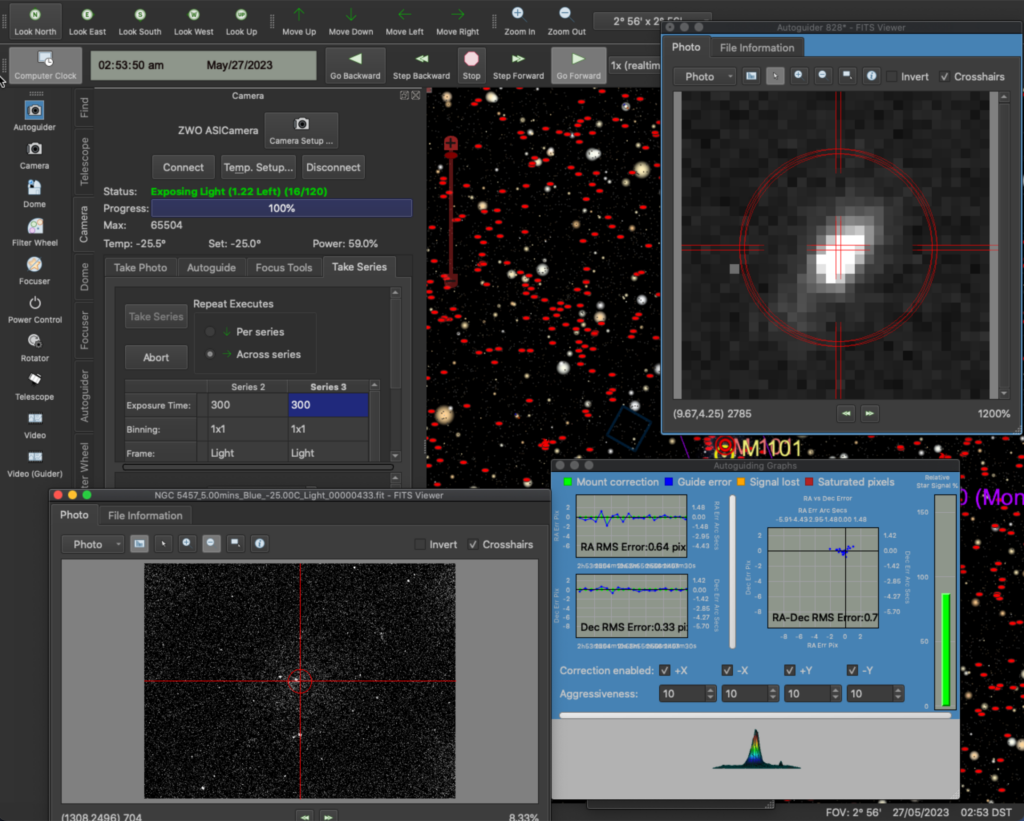
The main challenge I had early on was the the dome shutting unexpectedly. I will attempt to find out why over the next few months. The camera noise continues to be an issue but less so tonight so I think it may be USB related, again I will troubleshoot and check there cable lengths.
GingerGeek had a productive night troubleshooting a multitude of problems on his untested travel kit and was pleased with the results including taking his first image of a supernova in M101.

